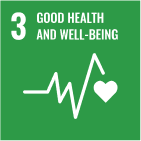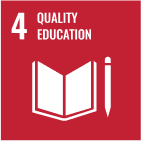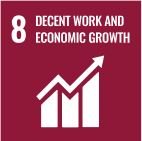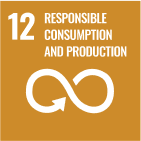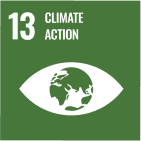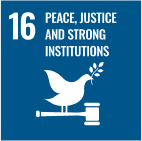sdg:
sdg:
-
3
-
4
-
8
-
12
-
13
-
16
Our patients
Social and Relationship Capital Highlights

88%
OF OUR HOSPITALS
are accredited with excellence (ONA3 or international certification).
1.6
million BENEFICIARIES
direct and indirect in social projects
44
HOSPITAlS
were awarded the Top Performer ICU and Efficient ICU certifications
R$ 17,5
million INVESTED
in social projects
Note: In this chapter, we provide a contextual view of impacts identified in the impact assessment process for the Economic Performance theme. To this end, the relevance of these impacts for our business, their management and effectiveness measures and involvement with stakeholders were described contextually. The real positive impacts were contextually reported, namely: Improvement of care and infrastructure of the Brazilian health system (pages 88 to 98); Creating jobs, collecting taxes and stimulating the economy (pages 105 and 106); and supplier development (pages 99 to 102). We identified the real negative impact as "Impacts arising from suppliers' lack of adherence to ESG requirements (pages 99 to 102) [GRI 3-3].
Patient-centered care
GRI 2-6, 3-3
Ensuring the best possible experience for our patients and their families during their stay with us is part of Rede D’Or’s commitment. To this end, we have adopted a care model in which the patient is at the center of everything by receiving our Core Business services, making up the downstream in our value chain [GRI 2-6]. Therefore, we have adopted a care model where the patient is at the center of everything. A multidisciplinary team led by a medical team is devoted to achieving the expected outcome while monitoring the technical quality of assistance care and service satisfaction. Our ultimate goal is to achieve the desired financial performance while creating value for our users.
We maintain a Patient-Centered Care Policy—described by a working group—as recommended by the Joint Commission International (JCI) methodology, and a Patient Experience Committee that continuously works on developing strategies for improving patient’s experience, as well as that of their families, and company’s employees. To this end, the Committee relies on perceived quality information and interactions with institutional leaders and medical records, palliative care, and mortality committees. Projects are implemented by working groups focused on the theme.
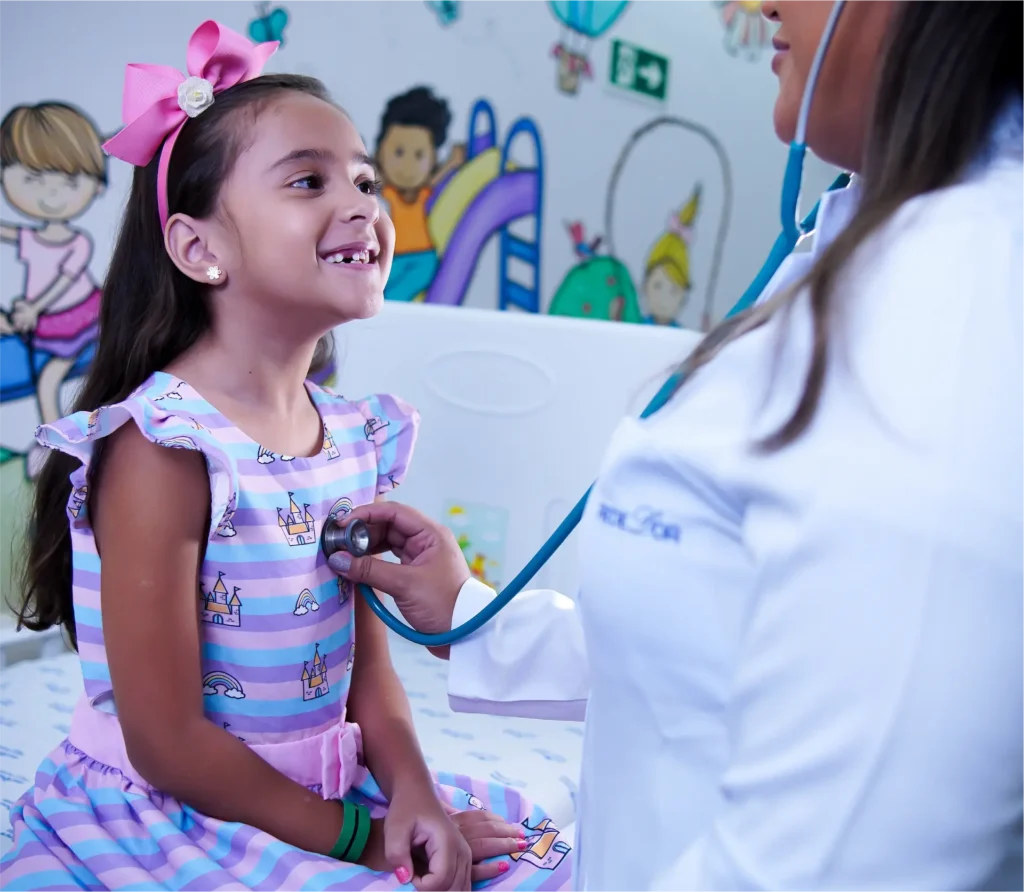
Hospital Estadual da Criança (Children’s Hospital)
Managed by Rede D’Or São Luiz since 2013, Hospital Estadual da Criança celebrates 10 years of excellence in pediatric care. Located in Vila Valqueire, in Rio de Janeiro’s Western Region, the unit is a reference in transplants and oncology and surgical treatments and has already provided care for more than 250,000 patients.
The hospital is a partnership entered into the company and the Rio de Janeiro State Health Department in 2012, to manage this new unit through D’Or Institute of Public Health Management. The Children’s Hospital is housed in the building of the former Hospital Rio de Janeiro—a private unit of Rede D’Or—which was provided by the company to provide public services to SUS patients through a Social Health Organization (OSS, in Portuguese). The hospital is the first pediatric unit in Rio de Janeiro focused on high-complexity surgical procedures and features modern facilities, fully adapted for pediatric care. Patients are referred to Hospital Estadual da Criança through the Rio de Janeiro State Regulatory System, as it does not provide emergency care.
The high volume of patient care continued to impact our Net Promoter Score (NPS) in 2023, which, although higher than that of the previous year (59 versus 56 in 2022), is still below our 2021 score, which was 64. We remain committed to achieving the NPS zone of excellence in all Star hospitals by 2030. We rely on the support of our Ombudsman Office, which operates with the units in an advisory model to help with recovery when a drop in NPS is identified and we are implementing a series of actions to consolidate the patient experience culture within the Company. In 2023, we resumed growth in NPS and other perceived quality indicators, which are directly affected by the high volume of patient care of the units. As recognition of our efforts, we have once again been nominated for the Experience Awards, which certifies companies with the highest NPS in Brazil [GRI 2-25, 3-3].
Seeking continuous improvement in our services, we also rely on tools to assess patient and employee satisfaction and to monitor healthcare quality indicators. Examples are managerial reports (Pearson correlation, HCAHPS and segmented IS indicators) showing detailed data in order to facilitate the identification of failures and, consequently, improve our performance level. In 2023, we developed dashboards to better manage our area indicators and invested in upgrading Requestia, a specific demand management tool, which allowed us to refine case typology, integrate with survey software, and develop a system for managing improvement actions. In an unprecedented initiative, in 2023, we also established an advisory board with clients for the co-creation of service journeys [GRI 2-25, 3-3].
Since 2015, hospital units have had improvement committees involving clinical and support teams, aiming to jointly evaluate customer feedback received through the ombudsman, satisfaction survey indicators, and testimonials to propose strategies and improvement actions for better service delivery to patients.
Between January and December 2023, we reached the milestone of over half a million surveys answered by our users. We received 104,625 demands through our Ombudsman Office, including complaints, compliments, and suggestions. Of this total, 79,687 were complaints, all addressed and returned to the customer [GRI 2-25, 3-3].
Transplants
For many people, organ transplantation is the only chance for treating their illnesses and having a better quality of life. Therefore, as a transplant reference center in Brazil, we have published an Organ and Tissue Donation Manual, available on our website, to inform families and guide them through the entire process, from the organization of the National Transplant System to the clinical tests required to identify potential donors. Our hope is to contribute to increasing organ donation in Brazil and to save lives through them.
We have an extensive transplant program within our network — kidney, lung, heart and liver — for which we provide a comprehensive set of patient guidance materials for transplant candidates and transplant recipients. In 2023, our kidney transplant program achieved the historic milestone of 150 procedures performed by Hopital São Rafael, one of our few accredited and authorized centers for the procedure in the state of Bahia. Meanwhile, the heart transplant program, established in 2017, gained the participation of Hospital Copa D’Or, which received certification and authorization from the Brazilian Ministry of Health to perform the procedure in 2023, the same year the unit also completed its first lung transplant.
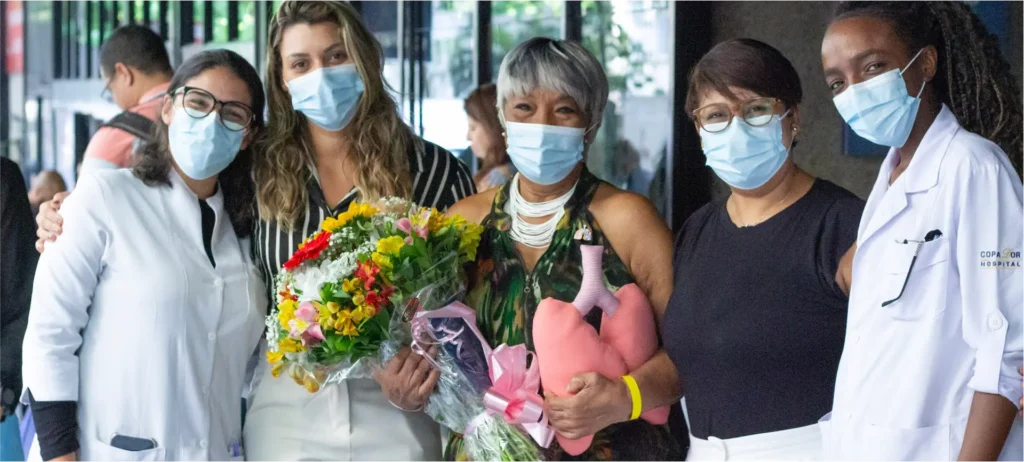
Patient Safety
GRI 3-3, 416-1, 416-2
Our patient safety policy is in line with the six international patient safety goals set by the World Health Organization (WHO) and the guidelines of the National Patient Safety Program. Supported by a risk monitoring and management system, we identify events in patient care and implement measures to minimize the occurrence of adverse events, strengthening a safety culture across all our hospitals.
We assess the impacts on patients’ health and safety in all of our services using indicators set by the WHO, which are regularly monitored by the healthcare teams. One of the tools we use is the continuous monitoring of recorded adverse events, such as a patient falling during an examination or incorrect medication dosage. All hospitals must report such events for proper analysis and the establishment of an action plan to minimize their occurrence. Harm caused to patients by unsafe care is a significant, growing global health challenge and one of the leading causes of death and disability worldwide. Notably, most of this harm is preventable.
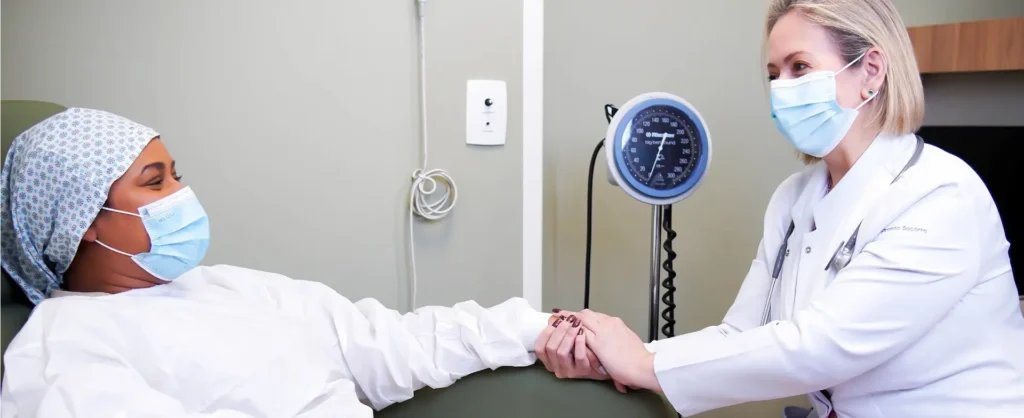
During the period, 707 hospitals in Brazil took part in the Brazilian ICUs project, of which 58 (8%) are from the Rede D’Or. Among the 234 ICUs recognized as Top Performers, 78 (33%) are from the Rede D’Or, i.e. one in three ICUs awarded the distinction are ours.
In 2023, we recorded 156 cases of non-compliance with laws related to impacts on health and safety that resulted in penalties, with 82 cases of medical errors and 74 cases of service delivery failures. The increase in cases compared to the previous year (62 in 2022) can be explained by the backlog of judicial decisions caused by the COVID-19 pandemic, which delayed trials and progress in proceedings, as well as by improvements in data registration in the company’s new procedural monitoring system. We had no cases resulting in warnings and/or fines, nor there were any cases of non-compliance with voluntary codes [GRI 416-2]. As part of an international initiative to improve patient safety and care quality, we held nine Zero Harm workshops (two in 2022), four of which in the state of Rio de Janeiro, two in São Paulo, one in Bahia, one in Pernambuco, and one in the Federal District. Annually, a survey is conducted to gauge the level of patient safety culture perception within Rede D’Or, using a survey instrument from the Agency for Healthcare Research and Quality (AHRQ). The goal was to explore how knowledge and technology can support the hospitals’ journey in this direction. In 2023, 48,560 professionals from 68 hospitals (both owned and managed) attended the events. As a result, 67% of participants rated patient safety in their units as excellent or very good.
Implementing the four pillars of the quality program leads to a culture of high patient safety and the democratization of quality standards across our entire network. Thus, we have been constantly evolving our indicators. An example of this is the recognition in the Brazilian ICUs project by the Brazilian Intensive Care Medicine Association (Amib, in Portuguese), which awarded intensive care units across the country with the Top Performer ICU and Efficient ICU certifications, indicating that the units achieved high or good performance, respectively, in the year. In 2023, 707 Brazilian hospitals participated in this project, 58 (8%) of which from Rede D’Or; and 1,980 ICUs, of which 195 (9.85%) are part of our Company. Among the 234 ICUs recognized as Top Performers, 78 (33%) belong to Rede D’Or, meaning that one in every three ICUs awarded with such distinction belong to us.
Regarding Technical Quality, we have identified continuous improvement of quality standards as the main challenge, coupled with the expansion of activities and the growth of our network size, absorbing more hospitals. Another challenge, common to most healthcare organizations, is the shortage of specialized workforce. In this regard, we seek to mitigate the issue through professional training at IDOR. Learn more in Instituto IDOR. Finally, we still face the challenge of demonstrating to society the value of this new culture of quality, based on adherence to standards and protocols, and how it positively impacts patient care [GRI 3-3].

Excellence in quality
GRI 3-3
To provide a safer environment for our patients’ treatment and the best possible outcomes according to each case profile, we maintain a structured Patient Quality and Safety Program based on the clinical governance pillars, as shown in the figure below:

Technical Quality

Performance Improvement
Process management
IQT Management
Accuracy of indicators
Variable compensation
Improvement cycles
Technical visits and Practice Manual
Quality Management
Document management
Assistance practices
Professional development
Events and campaigns
External
Drivers
Certifications
ANAHP/EPIMED interface
Assessment of patient safety practices - Anvisa
Patient
Safety
Risk management
Event notification
Perception, culture and safety research
Patient experience
Clinical audits

Robust clinical and safety protocols
drawn up by in-house experts
PROTOCOLS
and available for all our hospitals
Quality management
Our care practices undergo continuous evaluation through technical visits to the units and audits. The results are shared every month at Best Practices Meetings. To improve the units’ processes and, consequently, improve each one and the entire Company’s performance, we also conduct benchmarking visits among units to share information and experiences.
To enhance the technical skills of professionals working in quality offices, we rely on a Quality Assessor Development Program. Since the beginning of the project, in 2021, we have had the participation of 53 professionals in Corporate Quality Technical Visits, which are conducted in-person, hybrid, or remotely. By fulfilling defined requirements for professional participation, assessors progress through categories: trainee, junior, mid-level, and senior [GRI 3-3].
By the end of the 2023 technical visit schedule, the team was comprised of five senior assessors, eight mid-level assessors, eight junior assessors, and 22 trainee assessors. Since last year, we have enhanced the team through multiprofessional participation, incorporating into the group eight specialists in the following areas: anesthesia, hospital infection control, nutrition, pharmacy, and clinical staff management. In 2023, we welcomed four more specialists in the hospital infection control, pharmacy, and transplantation areas.
Another notable initiative in 2023 was the Quality Workshop for professionals from the offices of 52 hospitals (27 in São Paulo/SP, 22 in Rio de Janeiro/RJ, and four in Recife/PE), focusing on Process Management and Quality Tools.
Our range of clinical and safety protocols is robust and widespread. Currently, we have 73 of these protocols prepared by Rede D’Or specialists, 71 of which have already been published and made available to all hospitals.
There seems to be a consensus that if certain procedures used in aviation training, such as mandatory simulation-based l earning, standardized protocols, checklists, and crew instructions, were transferred to the healthcare sector, the result would not only be a significant improvement in patient care but also a sharp drop in mortality rates. Therefore, in 2023, we initiated a partnership with an aviation pilot to discuss Crew Resource Management to minimize the chances of an accident caused by human error. Three courses have already been conducted with the key leadership of São Luiz São Caetano, São Luiz Anália Franco, Niterói D’Or, Memorial São José, and Esperança Olinda hospitals.
Performance improvement
GRI 3-3
We anchor Rede D’Or’s management in processes where each business unit (emergency, ICU, inpatient unit, operating room, among others) defines the customers chain, suppliers, upcoming tasks, possible dangers, risks, and barriers, as well as process monitoring indicators. We have a 50 technical quality indicators panel, 24 indicators for adult patients, and 26 indicators for the maternal-child line, which we monitor in our hospitals, allowing for the analysis of hospitalized patients process and the outcomes.
We publicly disclose the seven most important indicators, which are mortality, ventilator-associated pneumonia, average length of stay in adult ICU, ICU readmission rate, primary bloodstream infection (associated with deep vein use), urinary tract infection (associated with tube use), and pressure injury. All results are analyzed so that we can continue to improve our processes. It is worth noting that we have stood out in the Anahp rankings; under the Top Performer ICU seal, awarded by Amib and Epimed Solutions; and by the group of hospitals accredited by the JCI methodology.
The indicators are also subject to internal audits to assess data accuracy. In 2024, we expect to implement an external assessment process conducted by independent entities. Analyzing the results of Rede D’Or’s Technical Quality Indicators (TQI) in 2023, we observe the evolution of our outcomes, with a reduction of 4.16% in the average length of stay in adult ICU, 11.11% in standardized mortality rate, 24.10% in primary bloodstream infection incidence density, 10.61% in catheter-associated urinary tract infection incidence density, 41.36% in ventilator-associated pneumonia incidence density, and 38.46% in pressure injury incidence density compared to 2022.
It is important to note that, between 2019 and 2023, we recorded a substantial increase in the number of hospitals participating in Quali D’Or Indicators adult profile (76%, from 37 to 65¹), which also elevates the challenge of adopting practices in the new units to ensure the Rede D’Or standard. Maintaining results at these levels, despite the integration of so many new units, is notable especially when compared to external benchmarks, demonstrating the importance of the Technical Quality pillar for our Company.
Success stories are documented in Rede D’Or’s Manual of Care Practices, prepared with the collaboration of specialized professionals from hospitals across Brazil. In 2023, we implemented the second edition of the material in 69 hospital units, covering good practices in quality and safety and compliance requirements with legislation.
A standardization manual is an important tool for internal assessment of our hospitals’ performance, contributing to performance improvement and preparing for accreditation processes. Hospitals that achieve an overall compliance rate equal to or greater than 75% are recognized. Technical assessment cycles of the standards outlined in the Manual of Care Practices occur every two years. Hospitals that achieve an overall compliance rate equal to or greater than 75% are recognized. In 2023, the five best performing units were Hospital São Luiz São Caetano, Hospital São Luiz Anália Franco, Hospital Vila Nova Star, Hospital Assunção, and Hospital São Luiz Morumbi. In 2024, the third edition of Rede D’Or’s Manual of Care Practices will be adopted following a revision process. Units are required to adhere to these standards to prepare for the assessment scheduled for 2025 [GRI 3-3].
1Considering owned and managed hospitals.

It is worth considering that, between 2019 and 2023, there was a significant increase in the number of hospitals participating in the Quali D’Or Indicators adult profile (76%, from 37 to 65¹).
We have a panel of
Technical quality indicators¹
| Technical quality indicators (TQI)¹ | 2023² | 2022 | 2021 |
|---|---|---|---|
| Average length of stay in adult ICU (days) | 5.07 | 5.29 | 6.29 |
| Incidence density of ventilator-associated pneumonia in adult ICU – VAP (per thousand) | 1.12 | 1.91 | 2.92 |
| Incidence density of central line-associated primary bloodstream infection in Adult ICU – BSI (per thousand) | 0.63 | 0.83 | 1.56 |
| Incidence density of indwelling bladder catheter-associated urinary tract infection in Adult ICU – UTI (per thousand) | 0.59 | 0.66 | 0.73 |
| Pressure injury incidence density in adult patients (per thousand) | 0.23 | 0.39 | 0.64 |
| Readmission rate in closed units up to 24 hours (adult ICU) (%) | 0.28 | 0.34 | 0.33 |
| Standardized in-hospital mortality rate (adult ICU) | 0.40 | 0.45 | 0.68 |
¹ The lower the value, the better the result.
² Figures reported for 2023 include owned and managed hospitals. In previous years we only reported our own hospitals.
External drivers
At Rede D’Or, we use accreditation as an external driver for the quality of services provided by the Company. We
currently have a total of 60 accredited hospitals. The remaining hospitals are in the process of accreditation (units need to have at least one year of integration to be properly assessed). Among the accredited hospitals, 53 are considered excellent (ONA 3 or international certification). Our hospital performance quality can be observed in the number of national and international accreditations received.
As of December 2023, Brazil had 53 hospitals accredited by the Joint Commission International (JCI), 17 of which are Rede D’Or hospitals, i.e., 32%. The National Accreditation Organization methodology recorded 414 accredited hospitals, 8% of which belonging to our Group. We also have eight units accredited as Diamond through the Qmentum International methodology; one unit accredited by the National Integrated Accreditation for Healthcare Organizations (NIAHO), and one unit accredited by the Agencia de Calidad Sanitaria de Andalucía (ACSA). Hospital Memorial Arthur Ramos in Maceió was the first hospital in Latin America to achieve excellent- level accreditation from ACSA.

hospitals accredited with excellence (ONA 3 in international)
Joint Commission International
Recognized as the most rigorous in the accreditation and certification of healthcare quality and patient safety.
| % accredited hospitals | 2023 | 2022 | 2021 | 2020 | 2019 | 2018 | 2017 | 2016 | 2015 | 2014 | 2013 | 2012 | 2011 | 2010 |
|---|---|---|---|---|---|---|---|---|---|---|---|---|---|---|
| 82% | 83% | 80% | 77% | 75% | 79% | 80% | 81% | 86% | 79% | 65% | 50% | 50% | 57% | |
| 2023 | 2022 | 2021 | 2020 | 2019 | 2018 | 2017 | 2016 | 2015 | 2014 | 2013 | 2012 | 2011 | 2010 | |
| ONA 1 and 2 | 7 | 8 | 6 | 3 | 5 | 6 | 10 | 11 | 10 | 8 | 7 | 3 | 3 | 3 |
| ONA 3 | 26 | 25 | 24 | 19 | 16 | 13 | 7 | 4 | 4 | 6 | 6 | 6 | 4 | 3 |
| Qmentum | 10 | 9 | 11 | 12 | 10 | 7 | 7 | 7 | 7 | 2 | 1 | 1 | 1 | 1 |
| JCI | 17 | 15 | 10 | 7 | 5 | 4 | 4 | 4 | 3 | 3 | 1 | 1 | 1 | 1 |
The fluctuations found in 2023 are due to the upgrading of certifications in some hospital units, for example, a hospital with ONA 1 and 2 certification achieved ONA 3 in 2023.
Accreditations

¹ Considering owned and managed hospitals.
Sharing good practices
Throughout the year, we organized and participated in various activities aimed at fostering engagement and disseminating a culture of good quality practices throughout our Company.
To reach different areas, we have the Share Program (Programa Compartilha), which encourages the multidisciplinary dissemination of culture, covering different areas. Additionally, we also host an annual Quality Showcase, where good practices are presented as scientific papers.
In 2023, we hosted the event’s 5th edition, with the participation of 52 hospitals and three partners (IDOR, Mederi Saúde, and Núcleo de Transplante). A total of 469 submissions were received across seven thematic axes: process improvement, innovative practices, safety culture, patient experience, clinical cases, health value initiatives, and waste reduction. Eighty-six professionals evaluated the papers and selected 42, 20 of which for poster presentation and 22 for oral presentation before a panel of specialists.
The winning paper in the health value initiatives axis was “Saving in anesthesia: cost-effective analysis of standardized and managed care by an institutional team.” São Luiz Itaim (SP), São Rafael (BA), and Vila Nova Star (SP) hospitals were recognized with the highest number of qualified papers. Due to the high level of the submissions, the content is being converted into articles for scientific publications.
On another front, we have a set of Technical Boards and Technical Working Groups for discussion and updating of our teams on topics such as infectious diseases, intensive care, emergency, surgery and anesthesia, inpatient units, central sterilization material, dressings, and wound covering. It is also worth highlighting the promotion of scientific events and the discussion of best practices among our units, aiming for a collective analysis of how the same protocol or practice can be applied or interpreted in different ways, adapting to the infrastructure. The best initiatives are awarded in an annual contest.
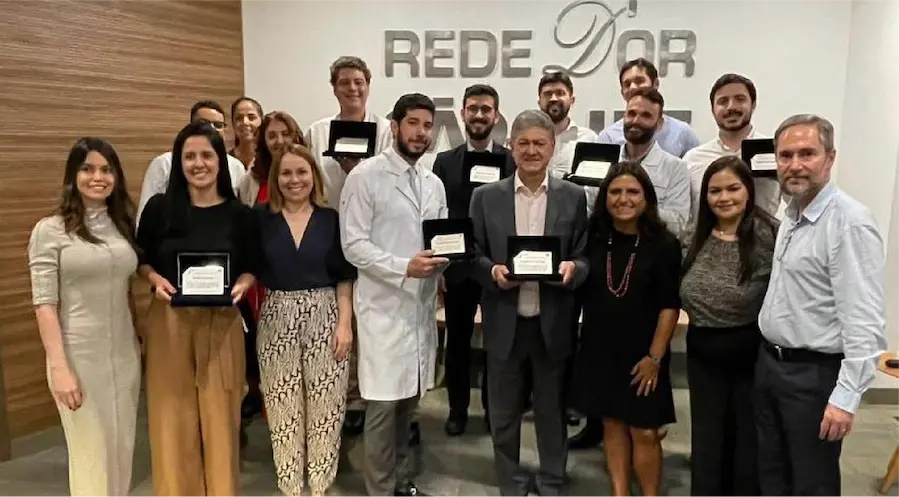
5th
REDE D’OR QUALITY SHOW
42
works selected
469
works registered in 7 thematic areas
The São Luiz Itaim (SP), São Rafael (BA) and Vila Nova Star (SP) hospitals were recognized with the highest number of classified works.
